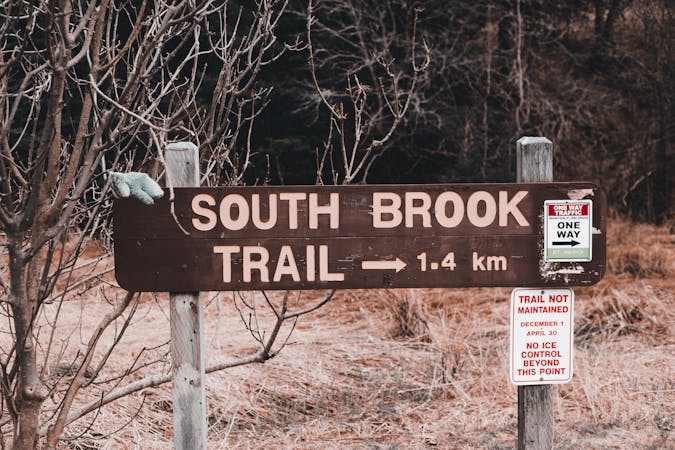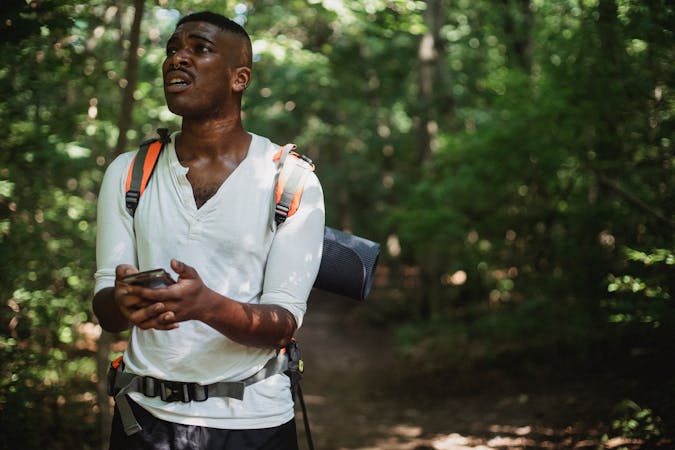
Embarking on a hike can be exhilarating, but small mistakes can lead to larger issues on the trail. Whether you’re new to hiking or seasoned but wanting to improve, here are some common hiking errors to avoid and how to sidestep them.
Being aware of mistakes is the best way to avoid them.
Preparation and Packing Mistakes
Incorrect Water Reservoir Placement
Placing a water reservoir at the bottom of your pack can lead to leaks that may dampen essential gear. To avoid this, pack water reservoirs on top to reduce strain on the material and minimize the risk of leaks reaching other items.
Improper Bug Spray Storage
Bug sprays with DEET can damage other gear, especially items made of synthetic materials. To prevent this, store DEET-based sprays in a sealed bag separate from other essentials, especially food, to keep your gear and snacks safe.
Overestimating Physical Abilities
Hiking requires a balance of confidence and caution. Choose trails that align with your fitness level and build up to more challenging hikes over time. Start with manageable distances and elevation gains, planning for a steady pace rather than a fast one.
No Turn-Back Time
Getting caught out after dark can be risky. Always set a “turn-back” time to avoid this, even if you’re not quite at your goal. This small precaution can make a big difference in safety, helping you avoid unexpected overnight stays.
Trailhead Confusion
Remote trailheads can be difficult to locate. Before setting out, research and save detailed directions, including landmarks to watch for and parking instructions, so you avoid spending time wandering or even missing the hike entirely.
Inefficient Packing
Keep items like snacks, maps, and a first-aid kit in easy-to-reach locations to avoid unnecessary unpacking. Additionally, avoid overpacking by sticking to essentials, as heavy packs can slow you down and add strain on the trail.
Not Testing Gear
Familiarize yourself with all your equipment, from adjusting trekking poles to operating a new GPS, before heading out. Testing gear ahead of time can help you spot any issues, and getting comfortable with it will make for a smoother hike.
Errors to Avoid On the Trail
Inappropriate Clothing
Avoid cotton, which absorbs moisture and dries slowly, leading to discomfort or even hypothermia in cold conditions. Choose moisture-wicking layers and, in wet weather, wear waterproof layers to stay comfortable and dry.

Not Bringing Enough Water
Dehydration can sneak up fast on a hike. Carry at least 1 liter of water for every 10 miles in mild weather, and add electrolytes for extended or strenuous hikes. You might need even more in hot or dry conditions. My hydration guide is a must read.
Ignoring Weather Forecasts
Weather can dramatically alter trail safety. Check forecasts from reliable sources and adjust plans if you anticipate extreme heat, cold, or storms.
Ignoring Weather Signs
In changing weather, keep an eye on the sky. Darkening clouds, gusts of wind, or sudden temperature drops may signal storms, so be prepared to find shelter if the weather turns.
Not Understanding Trail Conditions
Trails vary by season, with conditions ranging from mud and snow to loose rock. Use trail apps like AllTrails or Peakbagger to check recent reports on trail conditions, which can help you prepare or choose an alternative if conditions are challenging.
Navigation and Timing Mistakes
Poor Trail Research
Thorough research is crucial for a smooth hike. Understand the trail type, elevation changes, distance, and difficulty. Check for any closures or notable features, and make sure it aligns with your skill level.
Not Checking Position Regularly
Regularly tracking your position helps avoid getting lost, especially on complex or unmarked trails. Make a habit of noting landmarks or other markers on the route, and avoid risky shortcuts that might lead you off course.
Ignoring Trail Markings
Trail markings are there for your safety and guidance. It is easy to overlook them or assumeyou know the way. Staying mindful of trail markings ensures you stay on the correct route and avoid dangerous detours.
Starting Late
An early start leaves more daylight for your hike, reducing the chance of being caught in the dark. Carry a headlamp, even on shorter hikes, for an extra layer of safety.
Underestimating Darkness
Depending on the season, daylight can fade quickly. Plan your hike’s duration and set a turn-back time to ensure you’re back before dark, especially on longer routes or in areas with limited visibility.

Trail Etiquette
Respecting trail etiquette makes the experience better for everyone. Yield to uphill hikers, allow faster hikers to pass, and pack out any trash you bring in, following Leave No Trace principles.
Health and Safety Precautions
Ignoring Hot Spots
Blisters can ruin a hike. Treat any “hot spots” on your feet as soon as they appear, and change wet socks to avoid blistering. Having a basic blister kit handy can make a big difference.
Straining Knees
Hiking poles can take pressure off your knees, especially on steep descents. Adjust their length to provide the best support and reduce the risk of injury.
Underpacking Essentials
A balanced first-aid kit, plenty of food, and electrolyte powders are critical for both energy and recovery on the trail. Packing these essentials ensures you’re prepared for minor injuries or energy dips.
Not Sharing Your Plan
Before setting out, inform someone about your route, starting point, and estimated return time. This precaution is essential in case of emergencies, as it helps others pinpoint your location.
Relying on Cell Phones
Signal can be patchy on trails, making cell phones unreliable for navigation. Use a map or GPS and save phone battery for emergencies.

Footwear and Environmental Awareness
Wearing the Wrong Footwear
Hiking requires sturdy footwear with good traction. Trail runners may be a comfortable choice on longer, dry trails, while hiking boots offer better support on rugged or wet terrain. Test your footwear in similar conditions beforehand.
Understanding Terrain and Elevation
Know what to expect in terms of elevation gain—1,000 feet per mile is considered steep. Using topographic maps can help you anticipate the hike’s difficulty and make informed decisions about pacing.
Avoiding Poisonous Plants and Safe Steps
Familiarize yourself with hazardous plants in the area and stay alert for slippery or uneven ground to avoid slips or encounters with thorny or toxic plants.
My Final Thoughts
Avoiding these common mistakes will make for a safer, more enjoyable hike. By planning ahead, monitoring trail conditions, and being mindful of both your own abilities and the environment around you, you’ll be well-prepared for a rewarding outdoor experience. Happy hiking!
If you have any questions or mistakes you have made and would like to share, you can do so below.

Thank you for this informative article! Your insights into common hiking mistakes are incredibly helpful for both novice and experienced hikers. I especially appreciated the emphasis on proper preparation and understanding your limits. It’s so easy to overlook the importance of a good map and planning the route, which can make all the difference in ensuring a safe and enjoyable hike. I also found the tips on hydration and gear selection very practical. Keep up the great work—your content is invaluable for anyone looking to hit the trails confidently!
I really enjoyed reading this! These hiking tips are spot-on, and it’s surprising how easy it is to overlook the basics. Packing the right gear, planning for weather changes, and knowing the trail are so important for a safe and enjoyable hike. I’ll definitely be more mindful of these things next time I head out. Thanks for sharing such practical advice—great reminders for both beginners and experienced hikers!
Such a helpful guide, thanks for covering these common hiking mistakes in such detail!
It’s easy to underestimate the importance of small details like packing strategy and setting a turn-back time, but they make a huge difference on the trail. I’m especially interested in how gear can impact the overall experience.
Do you have any favourite hiking essentials that you wouldn’t hit the trail without?
Or maybe a tip for someone looking to streamline their pack?
Looking forward to hearing your thoughts!
Hi Benjamin,
A first aid kit and knowing how to use it is a must. As water tends to be the heaviest item I carry. Checking if water is available on your hike and carrying a wayer purification system can reduce weight.